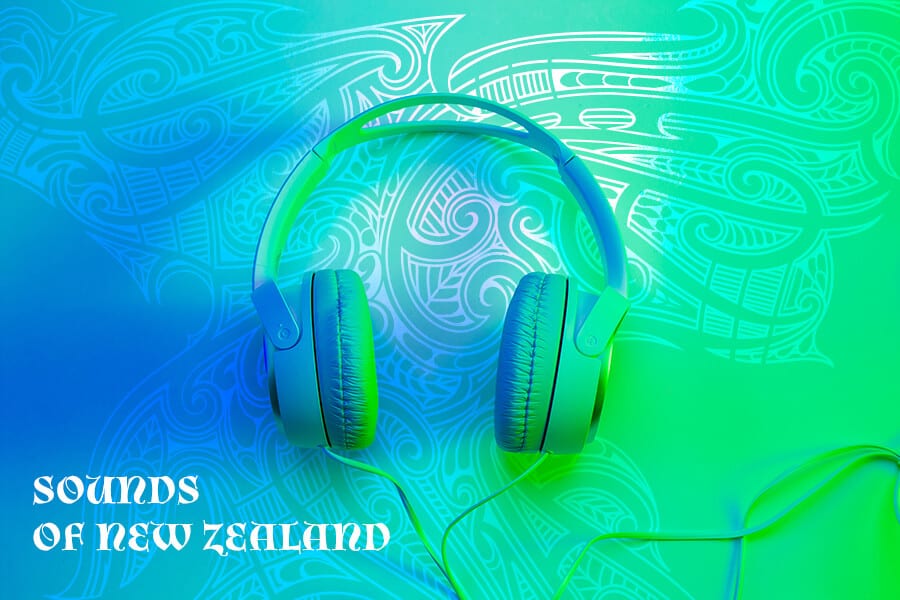The impact of music upon other parts of the globe is fascinating. Discovering the musical implications of Australian folk music, presented much correlation with the majestic, beautiful lands of New Zealand. From the musical influences of the Maori natives to the evolving New Zealand pop music endeavors, New Zealand has found a way to create true positive musical reactions.
The island country of New Zealand has not been a huge acknowledging entity in my life. When I was a younger boy, I had a beautiful Polynesian friend who loved music as much as I did. She would exude their heritage and ancestry with a song in her heart, as she graced many with her amazing presence. I was always fascinated with her culture and the past of her people. Unfortunately, many of the world history books, ceased from discussing the history of her culture and many Polynesian people throughout the globe.
The truth of the matter, myself and many of my friends did not hear much about the beautiful country of Oceania growing up as I dabbled into the valley of world music. With my American style glasses tinting my vision of anything outside of the national bubble, it was fascinating to discover many of what I already was impressed about New Zealand’s fabulous music scene. My favorite singer of all time, Kimbra (check out my review of her album The Golden Echo) hails from the island of New Zealand and her cultural influences in her music is apparent. However, does New Zealand have a sound that crosses the ocean floor? The heated ground of Australia circulated a similar musical folk origin as New Zealand. Many of the systematic structures of music are very much the same. Many sounds of the New Zealand island have sparked an influential aspect of indie pop music, but does it remain to hold the traditional sounds in today’s modern music world? I came to learn that the musical impact made by the contributions of her family’s past paved for future generations to explore authentic sounds that flourish on a micro and macro scale.
Maori Music!
Centered around pre-colonial music, the New Zealand traditional music of Maori was consistently microtonal in nature. The composition of Maori music was composed from the native Maori people of New Zealand. The Maori are of Polynesian descent. Throughout their settlement of New Zealand, many prospered to surround the warmer northern part of the island. With the folk music style, microtonal music involves the intervals smaller than semitones. Microtonal music is usually not found in western tuning and is a skill of its own surrounding it’s interpretation. Maori music involves the repetition of melodic structure and group singing in unison. With its heavy roots in South East Asian culture, the genre of music continues to be appreciated throughout centuries. The music style further developed through artistic stylings of dance and poetry. A beautiful artist “Maisey Rika” keeps the authentic sound alive through the traditional sounds of New Zealand’s ancestry.
Instruments of the beautiful genre were played from a variety of instruments made of wood, stone, albatross bone called Taonga Puoro. From objects such as the wooden trumpets (Pukaea) to the conch shell trumpet called Putatara, the multi-functional instruments have been revived from artists such as “Hirini Melbourne” and “Brian Flintoff”.
With the European settlers bringing vocal stylings of harmony and other instrumentation, the Maori folk music remained a progressive traditional entity of New Zealand culture for the early 20th century. Throughout the 1950s, many show bands proclaimed the traditional music formed throughout New Zealand and Australian land. Surrounding the Maori culture, bands would express themselves through Maori costumes that exuded the richness of the traditional sound. The question pondered through the time, was if the folk sound would live throughout the span of time through the advancement of musical technologies.
New Zealand’s Modern Sound
With the development of the recording industry in the 1940s, much of the radio stations were reluctant to play the traditional sounds of New Zealand natives. According to Wikipedia, 1.6% of all songs played on the radio in 1995, were of New Zealand origin. With the efforts of Kiwi Music Action Group, the group fought for the broadcasting of authentic traditional music in 1997. Their efforts continued as the radio content progressed 19%-20% by 2005.
As radio music progressed, artists such as “Ruru Karaitiana”, “Pixie Williams”, and “Sandy Edmonds” became pop royalty for the majestic country. A generational favorite from New Zealand is the international pop sensation “Lorde”, hailing from the suburbs of Auckland.
New Zealand has further carried themselves on national authenticity when it comes to the variety of musical genres.
Rock music of New Zealand (also referred to as Kiwi Rock) began with “Johnny Cooper” in 1955. By the 1970s Kiwi Rock developed into a national sound of New Zealand. The American influence of Hip hop flew onto the scene in the 1980s creating a popular sub-genre of popular music for years to come. Another well-established part of New Zealand music is New Zealand Reggae, forming highly acclaimed bands and singers. On the opposite spectrum of musical endeavors, electronic music dived into the New Zealand waters in 1982 with the group “The Body Electric”.
As I listen to the various sounds of New Zealand, I could notice the subtle traditional sounds in every implication of the musical genres. From “Lorde” to the techno sounds of “The Body Electric”, the tribal upbringing of Maori music remains to show in different parts of modern national music. Much of the drum interpretation of indie pop comes from the essence of Polynesian drum sounds and approaches. The recent Disney phenomenon “Moana“ paints a vivid musical picture of similar Polynesian culture and embodies the essences of the traditional sounds with modern spins. The sounds of New Zealand will remain a prevalent staple on world music.
Photo: Shutterstock / Photomontage: Martina Advaney
Read more reviews from the author.
Crikey! The Australian Folk Sounds Take a Strong Bite out of World Music
Support us!
All your donations will be used to pay the magazine’s journalists and to support the ongoing costs of maintaining the site.
Share this post
Interested in co-operating with us?
We are open to co-operation from writers and businesses alike. You can reach us on our email at cooperations@youthtimemag.com/magazine@youthtimemag.com and we will get back to you as quick as we can.










